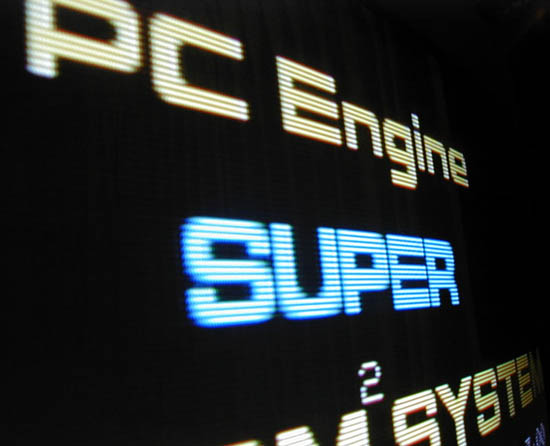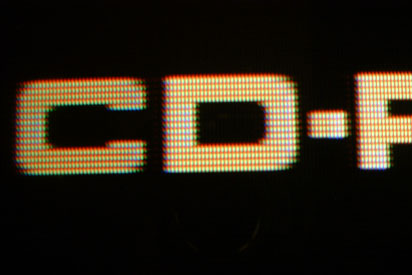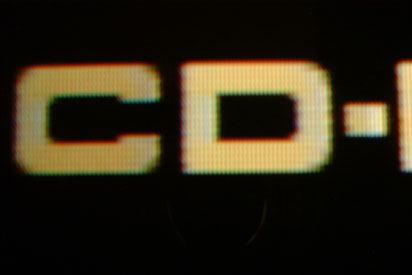|
|
This topic comprises 2 pages: 1 2
|
|
Author
|
Topic: Does NTSC have a "Non-Interlace" mode?
|
Joe Redifer
You need a beating today

Posts: 12859
From: Denver, Colorado
Registered: May 99
|
 posted 09-15-2004 08:44 PM
posted 09-15-2004 08:44 PM





Old school videogame systems like the Nintendo Entertainment System, Sega Master System, Sega Genesis, Super Nintendo, TurboGrafx-16/PC Engine, etc all ran at resolutions in the neighborhood of about 320x240. There was no visable interlacing at all when viewed on an NTSC CRT TV. Look at this picture:

See the "empty scan lines" between the regular graphics? They are always there 100% of the time and do not flicker... ever. The colored lines also are 100% rock steady with zero flicker. it looks every bit as steady as 480p, just with much less resolution. I've only seen NTSC do this on video games and some menu screens in certain A/V components. My question is this: What is going on here? Does NTSC have some sort of built-in "240p" mode?
I asked a very similar question about this on the AVS forum (a place where home theater losers hang out), and they simply could not comprehend what I was saying, even with the picture. It flies in the face of conventional wisdom. I got replies like:
"It is interlaced. NTSC is NTSC"
"It interlaces at 60 times per second specifically so you CAN'T see the flicker!"
"It interlaces, but it uses only one field for the game graphics, but draws the other field completely black!"
Some people actually seemed to get a bit angry that I would dare suggest NTSC is capable of not interlacing.
Anyway, in answer to some of the quotes above, I do in fact notice interlace flicker. Interlacing is very annoying to me. If it were imperceptible as suggested, then there would be no need for progressive scan at all. Also, if only one screen were used for the game graphics and the other drawn completely black yet still interlaced, you'd notice a crazy amount of flicker and the game would be limited to drawing its graphics at 30 frames per second. That would make for some really choppy scrolling in games such as Super Mario Bros. But the scrolling is 60fps smooth. I can tell the difference between 30 and 60fps easily.
Also, my analog to DV video converter does not support this "240p" mode. What it does when I feed it a signal like this is turn it into interlaced video, duplicating the scan lines and basically "filling in the blanks". It looks much different when it is interlaced, and it appears blockier. If one of the fields were actually a black screen, you'd be able to see that when the DV device did its thing. Here are pictures between the original composite input and the same input after being coverted to interlaced by my DV converter:
Original NTSC image:

Same image converted to interlaced mode:

Both pictures were taken with the same camera using the same settings on the same TV maybe 15 seconds apart. There is no Photoshop going on here (other than resizing).
So what is going on? Does NTSC really have some sort of half-assed 240p low resolution mode? Every NTSC TV I've played video games on that is a CRT seems to be able to do this.
My theory is that the game uses one field and one field only. The second field is never drawn, ever. That way the game system can update its graphics 60 times per second and have smooth scrolling and whatnot, and it keeps it steady without the overhead of 640x480 graphics that these older systems could not handle. Since the graphics are all drawn in one pass 60 times a second across the same set of scan lines each time, technically it could be called progressive.
Think about it before you respond with useless comments like "Sorry Joe, but NTSC is NTSC. It ALWAYS interlaces. End of story. PS - I am a moron". But if you have good info, questions, or whatever, please post with your thoughts!
| IP: Logged
|
|
|
|
|
|
|
|
|
|
|
|
|
|
|
|
|
|
|
|
|
|
|
|
|
|
|
|
|
|
|
|
All times are Central (GMT -6:00)
|
This topic comprises 2 pages: 1 2
|
Powered by Infopop Corporation
UBB.classicTM
6.3.1.2
The Film-Tech Forums are designed for various members related to the cinema industry to express their opinions, viewpoints and testimonials on various products, services and events based upon speculation, personal knowledge and factual information through use, therefore all views represented here allow no liability upon the publishers of this web site and the owners of said views assume no liability for any ill will resulting from these postings. The posts made here are for educational as well as entertainment purposes and as such anyone viewing this portion of the website must accept these views as statements of the author of that opinion
and agrees to release the authors from any and all liability.
|

 Home
Home
 Products
Products
 Store
Store
 Forum
Forum
 Warehouse
Warehouse
 Contact Us
Contact Us




 Printer-friendly view of this topic
Printer-friendly view of this topic















![[Smile]](smile.gif)



